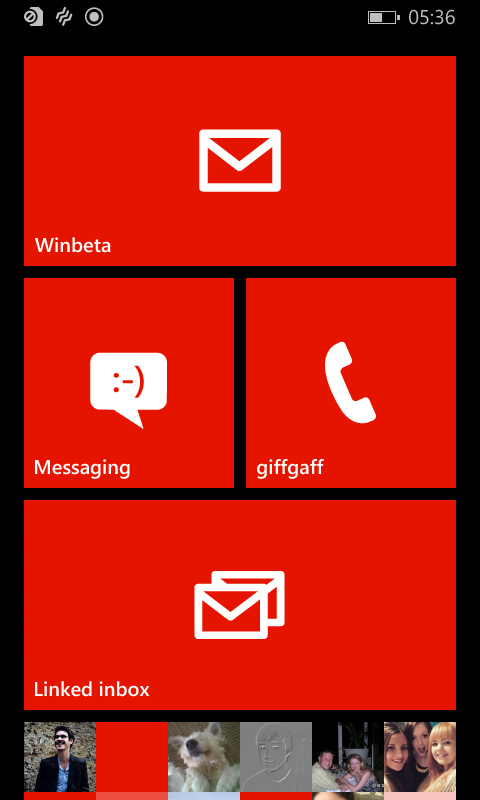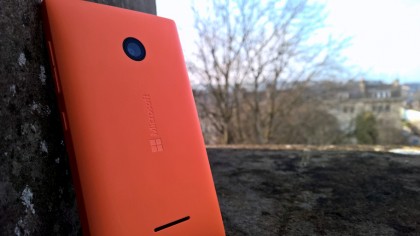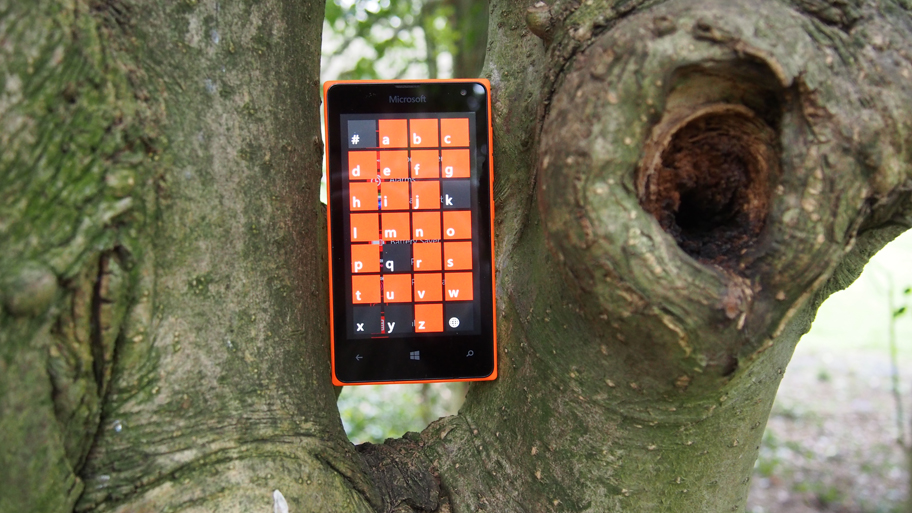Why you can trust TechRadar
As is very important for most people who want to use their phone as a phone, the Lumia 435 is excellent for making calls. Call quality was rock solid, with voice reception clear on both ends, with very little distortion.
The in-built microphone also did an excellent job of separating the noise of a busy street from my voice, something which I did not expect at this price point.
The People Hub also remains one of the finer points of the Windows Phone OS and Microsoft has done a good job of building a 'smart' contacts list.
In the hub, all contacts are pulled together in a neat little list, and in a nice twist information is pulled from social accounts, making the People Hub a great way to stay updated.

Internet connectivity proved to be strong. HSDPA+ performance across the Bath and Bristol area on the O2 network proved to be strong, without any major hiccups.
Being a country bumpkin, having no 4G proved not to be an issue, certainly not at this price point.
Using the internet never proved to be an issue. Internet Explorer, Windows Phone's native browser, proved to be a fairly swift guide through the darkness of the net, however Flash heavy-sites did cause some stuttering. Pages mostly loaded quickly, and I had no major complaints regarding the Lumia 435's performance in this area.
The Windows Phone in-built email client also proved to be quite useful. As a native offering, it is relatively feature-rich, pulling three email accounts into one inbox proved to be a very easy process and it worked fluidly throughout the review process.
As for text editing, the Windows Phone keyboard remains an excellent option.
Though the platform doesn't have the ability to select from a host of different option, the keys are well spaced, the feedback is nice, gesture typing works well and auto-correction is mostly faultless.
Finding a better option elsewhere is certainly possible, but when compared to the default keyboards of certain Android OEMs, the Windows Phone offering is solid.
GPS performance was adequate, achieving a lock within a reasonable time frame.
Camera
The last, and biggest sacrifice to cost, asides from the processor and the screen, comes in the form of the rear-facing camera of the Lumia 435. It is a 2MP fixed-focus effort, seemingly transported straight from a candy-bar phone in 2005. Needless to say, images are not excellent.
Even in bright lighting, with good visibility, the images produced by this tiny sensor are very soft, with little fine detail. As might be expected, when viewed on the smaller screen of the phone, this is less apparent; when blown up, it is a completely different story.

Given the fixed focus of the lens, shots are often very blurry and must be aligned correctly for acceptable results. As might be expected at this price, there is no flash.
For such a cheap phone, this is hardly surprising. Yet as 5MP auto-focus efforts are slowly working their way down the pecking order into more and more budget handsets, it is unusual to see such a poor snapper, especially in a range which is known for its camera performance.
However, very unusually for such a budget device, a front-facing camera has been included. In addition to allowing for the ever-important selfie, this facilitates video-calls.

With a VGA resolution, however, Skype calls eventually begin to resemble conversation through cataracts. This is a good effort for the price, yet remains essentially unusable. Those looking for a better selfie cam are best advised to look at the Lumia 535, which has a nice wide-angle 5mp front-facing sensor for only £30 more.
Video from the rear-camera was similarly poor, with footage being very shaky, though recorded audio was surprisingly decent. Footage can either be recorded in FWVGA or VGA resolution.
Sean is a Scottish technology journalist who's written for the likes of T3, Trusted Reviews, TechAdvisor and Expert Reviews.
